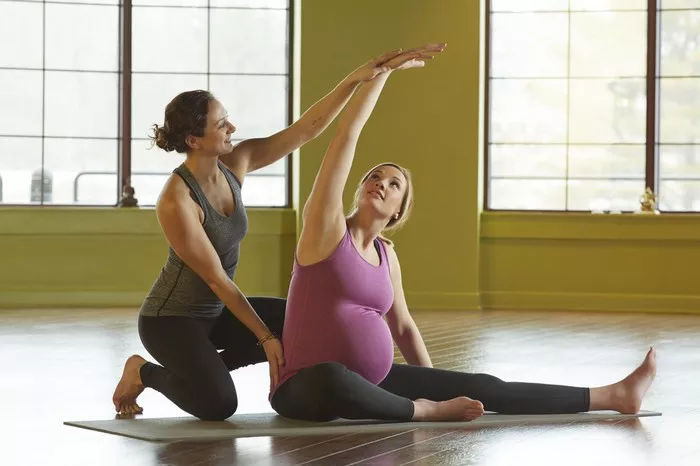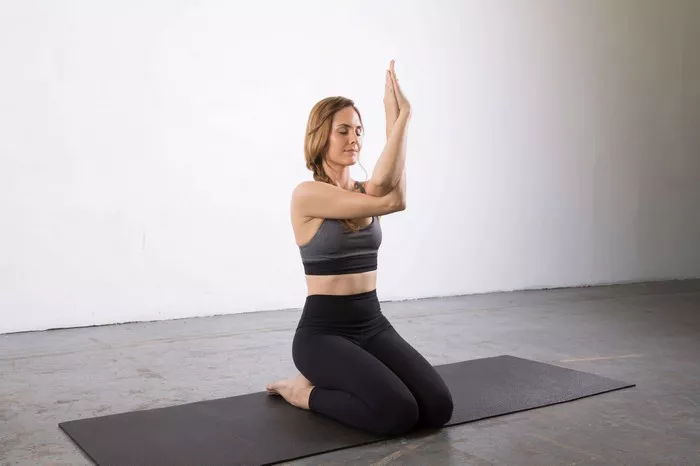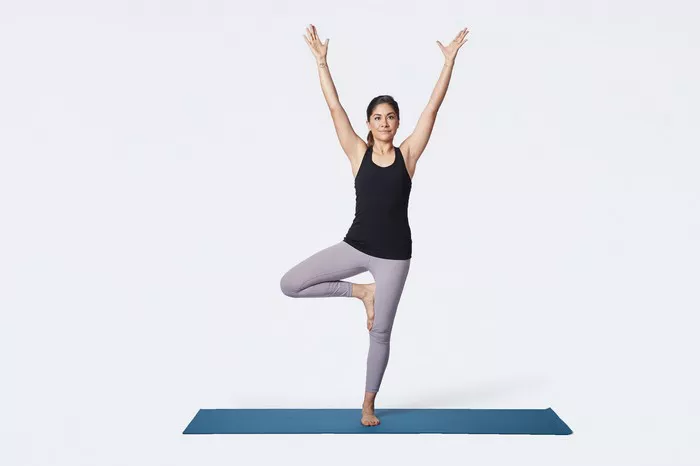Pregnancy is a beautiful and transformative journey, but it can also be a time of many physical and emotional changes. Expecting mothers often seek ways to stay healthy, relieve stress, and maintain fitness throughout their pregnancy. One popular option that has gained considerable attention is yoga. Yoga during pregnancy can be a wonderful way to stay active, relieve tension, and prepare the body for labor. But the question often arises: is beginner yoga safe during pregnancy?
The answer, like many things related to pregnancy, is nuanced. Pregnancy is a time when a woman’s body undergoes numerous changes, and while yoga can offer many benefits, it’s essential to approach it with care. The good news is that, with proper modifications and guidance, beginner yoga can be safe and beneficial during pregnancy. However, it is crucial to understand the physical, mental, and emotional considerations before embarking on this practice. In this article, we will explore the benefits of yoga during pregnancy, safety guidelines, modifications for each trimester, and the importance of consulting with a healthcare provider.
The Benefits of Yoga During Pregnancy
Yoga is a holistic practice that integrates movement, breath, and mindfulness. When done correctly, it can offer a wide range of benefits for pregnant women. Some of the key benefits include:
1. Physical Benefits
Pregnancy often brings with it a variety of physical discomforts, such as lower back pain, swollen legs, and tight muscles. Yoga can help alleviate some of these issues by promoting flexibility, improving posture, and strengthening muscles that support the spine and pelvis. Key benefits include:
Improved Flexibility: Pregnancy hormones, especially relaxin, cause the ligaments and joints to loosen in preparation for childbirth. Yoga can help maintain flexibility in the body, particularly in areas such as the hips, shoulders, and lower back.
Reduced Back Pain: As the body’s center of gravity shifts during pregnancy, the lower back often becomes strained. Yoga postures that focus on stretching and strengthening the back can help alleviate tension and reduce discomfort.
Better Circulation: Yoga encourages the flow of blood and oxygen throughout the body, which can reduce swelling in the legs and feet, increase energy levels, and help prevent varicose veins.
Enhanced Breathing: Pregnancy can make breathing feel more difficult due to the growing uterus pressing against the diaphragm. Yoga emphasizes deep, controlled breathing, which can help strengthen the respiratory system and improve lung capacity.
Increased Core Strength: While certain poses may need to be modified during pregnancy, yoga still offers an excellent opportunity to strengthen the core muscles, which are essential for supporting the weight of the growing belly and maintaining balance.
2. Mental and Emotional Benefits
Pregnancy can be an emotional rollercoaster, with fluctuating hormones, anxiety about labor, and the pressures of preparing for motherhood. Yoga provides a mental and emotional sanctuary. Some of the key mental benefits include:
Reduced Stress and Anxiety: Yoga’s focus on mindfulness and breathwork helps activate the parasympathetic nervous system, which promotes relaxation. It can reduce feelings of stress and anxiety, making it easier to cope with the physical and emotional challenges of pregnancy.
Improved Sleep: Many pregnant women experience sleep disturbances due to discomfort or anxiety. Yoga can help relax the mind and body, improving the quality of sleep.
Enhanced Connection to the Baby: The mindfulness aspects of yoga encourage a deeper connection with the body, making it easier for expectant mothers to connect with their growing baby.
Preparation for Labor: Prenatal yoga focuses on breathing techniques, pelvic floor exercises, and relaxation methods that are invaluable during labor and delivery. These practices can help reduce fear and anxiety surrounding childbirth.
3. Preparation for Labor and Delivery
Certain yoga postures and breathing techniques can be incredibly helpful in preparing the body for childbirth. For example:
Pelvic Floor Exercises: Yoga incorporates gentle pelvic floor exercises that can strengthen and relax the muscles needed during labor and delivery.
Breathwork: Yoga teaches deep, mindful breathing, which can help women stay calm and focused during labor. Controlled breathing can also help manage pain and promote a smoother birth.
Hip Openers: Prenatal yoga focuses on poses that open the hips, which can help prepare the body for labor and facilitate the birthing process.
Relaxation: Learning how to relax deeply and remain calm in stressful situations is crucial for childbirth. Yoga helps cultivate this skill, making labor less daunting.
Safety Guidelines for Practicing Yoga During Pregnancy
While yoga can offer numerous benefits during pregnancy, it is essential to approach it safely. The key to enjoying yoga during pregnancy is making modifications based on your individual needs and body’s changing condition. The following guidelines can help ensure a safe and beneficial practice:
1. Consult with Your Healthcare Provider
Before starting any exercise routine during pregnancy, including yoga, it is essential to consult with your healthcare provider. They can offer personalized guidance based on your health history, pregnancy progress, and any potential complications. If you have certain conditions, such as preeclampsia, placenta previa, or gestational diabetes, your doctor may recommend specific precautions or advise against certain activities.
2. Choose a Qualified Instructor
If you are new to yoga or pregnant, it is important to find an instructor who is experienced in teaching prenatal yoga. A qualified instructor will understand how to modify poses to ensure safety and can guide you through the appropriate practice based on your trimester and needs. They will also be able to provide you with the right techniques for breathing, relaxation, and mindfulness.
3. Avoid Overexertion
Pregnancy is not the time to push yourself too hard or attempt advanced poses. Focus on building strength and flexibility at a slow and steady pace. Avoid any postures that require balancing on one leg, lying flat on your back after the first trimester, or twisting the abdomen excessively.
Listen to your body, and if you feel lightheaded, dizzy, or uncomfortable in any pose, stop immediately. Rest when needed and stay hydrated throughout your practice.
4. Modify Your Poses
As your body changes during pregnancy, certain yoga poses may need to be modified or avoided altogether. For example:
Avoid Lying on Your Back: After the first trimester, avoid poses that involve lying flat on your back for prolonged periods, as this can put pressure on the vena cava, a major vein that can reduce blood flow to the uterus.
Avoid Deep Twists: Twisting the body deeply, especially the abdomen, can be uncomfortable and potentially harmful. Stick to gentle, open twists that do not place strain on the belly.
Modify Balance Poses: As your center of gravity shifts, balance poses may become more challenging. Use props like a wall, chair, or blocks for support.
Avoid Inversions: Poses that involve being upside down, such as headstands or shoulder stands, should be avoided during pregnancy due to the risk of blood pressure changes and dizziness.
Support the Belly: As your baby grows, you may need to use props such as pillows, bolsters, or blocks to support your belly and ensure comfort during certain poses.
5. Focus on Breath Awareness
Breathing is an essential part of yoga, and it becomes even more important during pregnancy. Focusing on slow, deep breaths can help manage stress and provide relaxation. Practice diaphragmatic breathing, where the breath moves deeply into the abdomen, which can increase oxygen flow to both the mother and the baby.
6. Stay Mindful of Your Energy Levels
Pregnancy can affect your energy levels, and it’s crucial to listen to your body and adjust your yoga practice accordingly. If you feel fatigued or dizzy, take a break. It’s better to practice fewer, gentler poses and rest than to overexert yourself.
Yoga Modifications for Each Trimester
The body goes through different changes throughout pregnancy, and each trimester comes with its own set of challenges and needs. It’s important to modify your yoga practice according to the trimester to ensure the safety and comfort of both you and your baby.
First Trimester (Weeks 1-12)
In the first trimester, many women experience fatigue, nausea, and changes in hormone levels. During this time, it is essential to focus on gentle poses that promote relaxation and alignment. Some guidelines for the first trimester include:
- Stick to basic poses that promote flexibility and strength, such as Child’s Pose, Cat-Cow stretches, and Downward-Facing Dog.
- Avoid deep twists and abdominal pressure.
- Stay hydrated and take breaks when needed.
- Pay attention to breath awareness, especially if fatigue sets in.
Second Trimester (Weeks 13-26)
The second trimester is often considered the “honeymoon phase” of pregnancy, as many women experience increased energy and fewer early pregnancy symptoms. However, the growing belly may begin to affect balance, and the body may require additional support. Some modifications include:
- Continue with gentle poses and stretches that focus on the hips, lower back, and upper body.
- Avoid poses that put excessive pressure on the belly or involve lying on the back for extended periods.
- Use props like blocks and bolsters to support the body and help with balance.
- Incorporate pelvic floor exercises to prepare for labor.
Third Trimester (Weeks 27-Birth)
During the third trimester, the body is nearing full term, and more significant modifications may be necessary to ensure comfort and safety. The growing belly and increased weight can make certain movements more difficult. Some key considerations include:
- Focus on gentle stretches, deep breathing, and relaxation techniques.
- Avoid poses that require lying on the back or deep abdominal twisting.
- Support the belly with props during seated poses or when stretching the hips and back.
- Work on breathing techniques for labor, such as slow, steady breaths and pranayama (breath control exercises).
Conclusion
In conclusion, beginner yoga can be safe and beneficial during pregnancy when practiced mindfully and with the proper modifications. Yoga offers pregnant women the chance to stay active, reduce stress, improve flexibility and strength, and connect with their bodies in a deeper way. However, it’s important to consult with your healthcare provider before starting any yoga practice, listen to your body, and avoid poses that may strain the body or compromise safety.
By following safety guidelines, making the appropriate modifications for each trimester, and working with an experienced instructor, yoga can be a wonderful addition to your pregnancy wellness routine. It can help prepare the body for the challenges of labor and delivery while fostering a sense of calm and connection with your growing baby. Remember that pregnancy is a time to nurture both your body and mind, and yoga can be an invaluable tool for supporting this beautiful journey.
Related Topics:

























